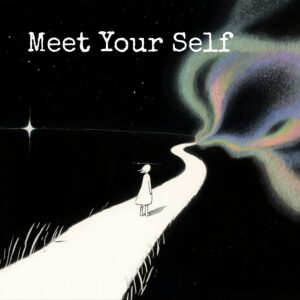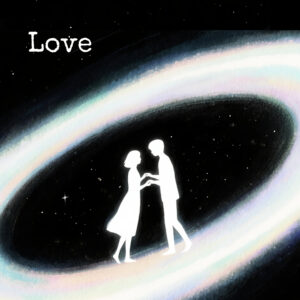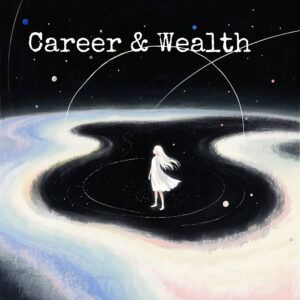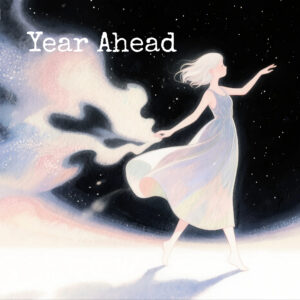Zodiac Logic Behind Astrological Aspects: Why Are Some Easy and Some Hard?
Astrology’s power lies in its ability to reveal the inner dynamics of our lives through planetary aspects. But why are some aspects considered “easy” and others “hard”? The real answer is hidden in the fundamental relationships between the zodiac signs—specifically, their elements (Fire, Earth, Air, Water) and modalities (Cardinal, Fixed, Mutable).
Let’s break down each major aspect type and understand their harmony or tension, followed by practical examples.
The Astrological Aspects: The Five Main Types
Before diving into the sign relationships, let’s recap the five core aspects:
Conjunction (0°): Planets at the same degree; total fusion.
Sextile (60°): Planets 60° apart; complementary cooperation.
Trine (120°): Planets 120° apart; natural harmony and flow.
Square (90°): Planets 90° apart; inner and outer conflict.
Opposition (180°): Planets 180° apart; dynamic balancing act.
Why Are Sextile (60°) and Trine (120°) Harmonious?
The Secret Is in Elemental Compatibility
Trine (120°): “Natural Flow Between Like-Minded Signs”
A trine links two signs of the same element (Fire, Earth, Air, or Water).
These signs share core values, worldviews, and energies. For example:
Aries–Leo–Sagittarius (all Fire): passionate, driven, spontaneous
Taurus–Virgo–Capricorn (all Earth): practical, grounded, steady
Gemini–Libra–Aquarius (all Air): intellectual, social, curious
Cancer–Scorpio–Pisces (all Water): emotional, intuitive, empathetic
Why is it harmonious?
The signs are “on the same team.” They get each other and reinforce one another’s strengths. There’s natural talent, shared perspective, and mutual support.
Sextile (60°): “Cooperation Between Compatible Elements”
A sextile links two signs of complementary but not identical elements:
Fire ↔ Air (e.g., Aries sextile Gemini or Aquarius)
Earth ↔ Water (e.g., Taurus sextile Cancer or Pisces)
These pairs don’t always “think the same,” but they easily cooperate.
Fire needs Air to breathe and be inspired.
Earth absorbs and nurtures Water; Water nourishes Earth.
Why is it harmonious?
The sextile is like two people with different skills working together: they stimulate, support, and bring out new possibilities in each other. Not as effortless as the trine, but full of opportunity.
Why Are Square (90°) and Opposition (180°) Challenging?
It’s All About Elemental Incompatibility and Modal Clash
Square (90°): “Conflict Between Different Elements, Same Modality”
A square links two signs with different elements but the same modality (Cardinal, Fixed, or Mutable).
Example: Aries (Fire, Cardinal) squares Cancer (Water, Cardinal)
Leo (Fire, Fixed) squares Scorpio (Water, Fixed)
Why is it hard?
The two signs have different goals, values, and methods, but are equally strong-willed (same modality). This makes for tension, confrontation, or “stuckness.” Both want to move, but not in the same direction.
Squares force growth through discomfort and friction.
Opposition (180°): “Polarity—Total Difference on the Same Axis”
An opposition links two signs on the same axis, but opposite elements and qualities.
Aries (Fire) vs. Libra (Air)—me vs. others
Taurus (Earth) vs. Scorpio (Water)—security vs. transformation
Gemini (Air) vs. Sagittarius (Fire)—facts vs. beliefs
Why is it hard?
Oppositions are a tug-of-war. They create polarity: “my way” vs. “your way,” inner vs. outer. The only path is integration and balance, not domination.
You are forced to see the other side and, ideally, unite opposites.
What About the Conjunction (0°)?
“Total Fusion: Potential for Both Harmony and Conflict”
A conjunction occurs when two planets occupy the same zodiac sign (and often, the same element and modality).
Why is it powerful (and sometimes hard)?
Their energies are merged—sometimes in total harmony (if the planets are friendly), but sometimes creating tension (if their natures clash).
It’s pure focus: strengths combine, but so do weaknesses.
For example, Mars conjunct Venus can mean passionate love, but also creative tension between desire and harmony.
Table: Aspect Types and Sign Relationships
| Aspect | Angle | Zodiac Sign Relationship | Harmony or Conflict | Reason (Elements & Modalities) |
|---|---|---|---|---|
| Conjunction | 0° | Same sign | Either | Fusion: Can amplify both good and bad |
| Sextile | 60° | Compatible elements (Fire-Air, Earth-Water) | Harmonious | Elements support and stimulate each other |
| Trine | 120° | Same element (Fire-Fire etc.) | Very harmonious | Natural flow, mutual understanding |
| Square | 90° | Different elements, same modality (e.g., Fixed-Fixed) | Challenging | Different goals/values, equal stubbornness |
| Opposition | 180° | Opposite elements, same axis | Challenging | Polarity, need for integration |
Real-World Aspect Examples: How Do These Play Out?
Let’s look at actual planetary aspects, using the above principles.
1. Moon Square Venus (Moon ☐ Venus)
Suppose Moon is in Capricorn (Earth, Cardinal), Venus is in Aries (Fire, Cardinal).
Sign logic: Earth and Fire are not compatible. Both are Cardinal (strong-willed).
Meaning: Emotional needs (Moon) and love/attraction (Venus) clash. The person may feel pulled between craving security and desiring excitement or independence in relationships.
2. Sun Opposite Moon (Sun ☍ Moon)
Example: Sun in Leo (Fire, Fixed), Moon in Aquarius (Air, Fixed).
Sign logic: Leo and Aquarius are on the same axis but opposite in style: self-expression vs. group ideals, both stubborn (Fixed).
Meaning: Strong inner tension between ego (Sun) and emotions/habits (Moon). Integration of personal pride and social awareness is key.
3. Mars Trine Saturn (Mars △ Saturn)
Example: Mars in Cancer (Water, Cardinal), Saturn in Pisces (Water, Mutable).
Sign logic: Both in Water signs (same element); energy and discipline support each other.
Meaning: Actions (Mars) are naturally supported by structure and patience (Saturn); ability to work steadily toward goals.
4. Mars Square Uranus (Mars ☐ Uranus)
Example: Mars in Taurus (Earth, Fixed), Uranus in Aquarius (Air, Fixed).
Sign logic: Different elements, both Fixed (stubborn); wants stability and innovation at once.
Meaning: Impulse to act (Mars) constantly at odds with desire for freedom or rebellion (Uranus). Prone to sudden changes or breakouts.
5. Mercury Conjunct Pluto (Mercury ☌ Pluto)
Example: Both in Scorpio (Water, Fixed).
Sign logic: Same sign—fusion of thought (Mercury) and depth (Pluto).
Meaning: Deep, investigative mind; intense focus. Potential for both psychological insight and obsessive thinking.
6. Mercury Square Neptune (Mercury ☐ Neptune)
Example: Mercury in Sagittarius (Fire, Mutable), Neptune in Pisces (Water, Mutable).
Sign logic: Different elements (Fire vs. Water), both Mutable (changeable).
Meaning: Tension between clear thinking (Mercury) and dreams/illusions (Neptune). Prone to confusion, but also great imagination if harnessed.
7. Venus Sextile Mars (Venus ⚹ Mars)
Example: Venus in Virgo (Earth, Mutable), Mars in Scorpio (Water, Fixed).
Sign logic: Earth and Water are compatible—practicality meets passion.
Meaning: Romantic or creative energy flows easily. Ability to blend desire with affection.
Summary Table: Why Each Aspect Is the Way It Is
| Aspect | Sign Relationship | Harmony/Conflict | Positive Traits | Negative Traits |
|---|---|---|---|---|
| Conjunction | Same sign (any element) | Neutral | Focus, intensity, fusion, power | Overload, obsession, internal conflict |
| Sextile | Fire-Air or Earth-Water | Harmonious | Opportunity, cooperation, flexibility | Passivity, missed chances |
| Trine | Same element | Harmonious | Natural talent, grace, luck | Laziness, complacency, over-reliance |
| Square | Different elements, same modality | Challenging | Growth, ambition, learning, drive | Stress, conflict, stuck patterns |
| Opposition | Opposite elements, same axis | Challenging | Awareness, integration, relationship skills | Polarity, projection, indecision |
Conclusion: Understanding Aspects Through Zodiac Logic
The “ease” or “challenge” of an aspect isn’t just about the planets involved—it’s about the relationship between the signs they occupy. Trines and sextiles feel easy because the signs are fundamentally compatible; squares and oppositions feel tense because the signs are fundamentally at odds or polarized. Conjunctions amplify everything, for better or worse, depending on planetary nature.
Every Aspect Is a Tool for Growth. Remember: No aspect is purely “good” or “bad.”
Harmonious aspects (sextile, trine) can lead to wasted talent if taken for granted, but offer ease and opportunity.
Challenging aspects (square, opposition) can cause stress and crisis, but also motivate real transformation and growth.
Conjunctions amplify everything—they are as powerful as the planets involved.
Understanding both sides helps you turn every aspect into wisdom.



